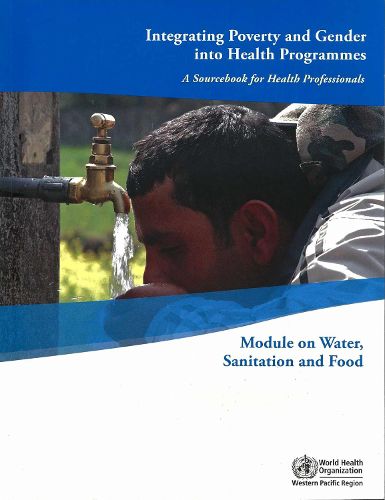Readings Newsletter
Become a Readings Member to make your shopping experience even easier.
Sign in or sign up for free!
You’re not far away from qualifying for FREE standard shipping within Australia
You’ve qualified for FREE standard shipping within Australia
The cart is loading…






This module is designed to improve the awareness, knowledge and skills of health professionals regarding poverty and gender concerns in actions to improve access to clean water, adequate sanitation and safe food.
The module is divided into six sections: Section 1 defines clean water, adequate sanitation and safe food, as well as waterborne and foodborne hazards and diseases. It also describes the distribution of clean water, adequate sanitation and safe food globally and within the Western Pacific Region specifically. Section 2 examines what the links are between poverty, gender and clean water, adequate sanitation and safe food. Section 3 discusses why health professionals should address poverty- and gender-related concerns with reference to clean water, adequate sanitation and safe food–from efficiency, equity and human rights perspectives. Section 4 discusses how health professionals can address poverty and gender concerns in policies, plans, programs and services to expand access to clean water, adequate sanitation and safe food. Examples of good practice are presented to illustrate potential interventions. Section 5 provides notes to facilitators and finally Section 6 is a collection of tools, resources and references to support health professionals in their work in this field.
$9.00 standard shipping within Australia
FREE standard shipping within Australia for orders over $100.00
Express & International shipping calculated at checkout
This module is designed to improve the awareness, knowledge and skills of health professionals regarding poverty and gender concerns in actions to improve access to clean water, adequate sanitation and safe food.
The module is divided into six sections: Section 1 defines clean water, adequate sanitation and safe food, as well as waterborne and foodborne hazards and diseases. It also describes the distribution of clean water, adequate sanitation and safe food globally and within the Western Pacific Region specifically. Section 2 examines what the links are between poverty, gender and clean water, adequate sanitation and safe food. Section 3 discusses why health professionals should address poverty- and gender-related concerns with reference to clean water, adequate sanitation and safe food–from efficiency, equity and human rights perspectives. Section 4 discusses how health professionals can address poverty and gender concerns in policies, plans, programs and services to expand access to clean water, adequate sanitation and safe food. Examples of good practice are presented to illustrate potential interventions. Section 5 provides notes to facilitators and finally Section 6 is a collection of tools, resources and references to support health professionals in their work in this field.